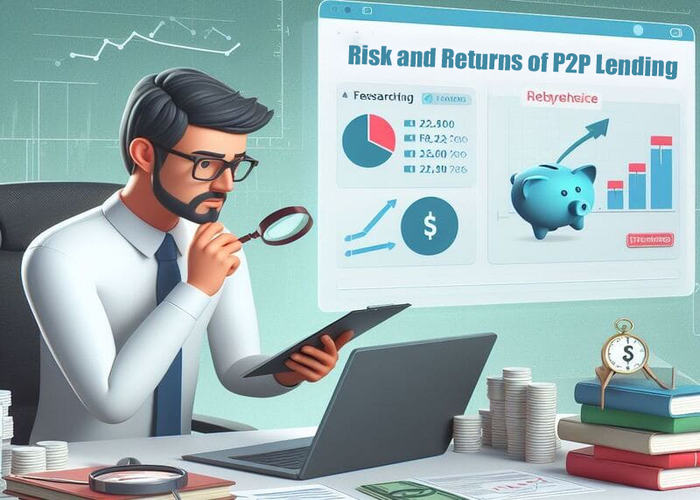What is P2P Lending?
Peer-to-peer (P2P) lending, regulated by the Reserve Bank of India (RBI), offers an alternative to traditional borrowing. Instead of relying on banks, individuals can seek and provide loans through online platforms. These platforms connect borrowers with individual lenders, offering potentially higher returns than traditional deposits. P2P lending streamlines the process, reducing hassles for borrowers, although it involves some risk for lenders. While it eliminates certain banking constraints, the platforms still play a vital role in vetting borrowers and managing transactions.
How does P2P Investments Work?
Peer-to-peer (P2P) lending operates through online platforms where lenders and borrowers directly connect.
Lenders open accounts on these platforms, while borrowers register, and their creditworthiness is evaluated based on various factors, including credit scores, employment, income, and social media activities.
The assessment places borrowers into different risk buckets, determining the interest rates they pay. Lenders can review these assessments and choose borrowers to lend money to.
P2P platforms charge fees for their services, and their activities are regulated by the Reserve Bank of India (RBI) to ensure transparency and prevent fraudulent practices.
Both borrowers and lenders undergo-
- Registration processes
- Submitting Know Your Customer (KYC) documents
- Bank statements.
Lenders transfer funds to an escrow account, which are then directly transferred to chosen borrowers’ bank accounts. Platforms may offer detailed borrower information, and specific requirements, such as minimum and maximum investment amounts, which are regulated by RBI guidelines.
Lenders set fixed interest rates for a specific lending period, with options to withdraw or reinvest profits at the end of the term.
Some platforms allow lenders to choose specific borrowers, while others diversify investments across multiple borrowers for risk management.
Overall, P2P lending provides a direct and potentially more lucrative alternative to traditional banking, though it involves careful consideration of associated risks. Let’s us now list down the risks and returns of P2P investments in India.
Risks of P2P Lending
Peer-to-peer (P2P) lending offers an alternative to market-linked investments known for their daily price volatility.
While the value of your P2P loans may not fluctuate significantly day-to-day, it is not entirely devoid of risk. Market-linked products such as stocks, bonds, gold, and mutual funds are subject to daily fluctuations in their prices.
In contrast, Peer-to-Peer (P2P) lending eliminates market-related risks, meaning the value of your investments in P2P lending remains stable daily.
The primary concern lies in the potential for borrower default, where individuals may fail to repay the principal and interest due. P2P platforms can assist in the recovery process, but complete recovery is not guaranteed. Diversifying your investments across numerous high-creditworthy borrowers can help mitigate this risk.
Returns of P2P Lending
In P2P lending, your profit depends on how much risk you’re comfortable with. It’s like a balancing act. Two things affect the risk: the borrower’s credit history (how reliable they are at paying back loans) and the length of the loan (the longer it is, the riskier it becomes).
Generally, riskier borrowers and longer loans offer higher returns, but it’s hard to say exactly how much you can make because P2P lending is still new and there isn’t much data yet. Platforms like Monexo, say their lenders make an average of 13% profit in one year, which is pretty good for short-term loans.
P2P lending can be a good way to earn more on your money, but remember, the higher the potential return, the higher the risk.
So, is it good to go for P2P Lending?
While bank fixed deposits offer a modest 7% annual interest, the P2P will provide you with 13%. It is one of the best alternatives to fixed deposits in India. However, higher returns don’t come without risks. So, you must be cautious and invest only after knowing the crux of lending.
The good news? The Reserve Bank of India (RBI) regulates P2P NBFCs to minimize these risks. But remember, it’s still riskier than FDs. Think of it this way: while equities can face steep corrections (20-30% swings), P2P defaults are less dramatic but still present.
P2P returns are high, but not guaranteed. Invest cautiously with full awareness of the risks.




